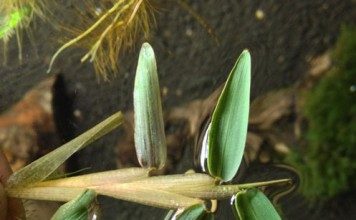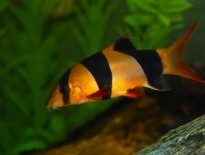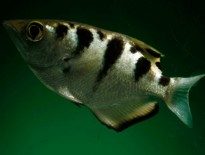The Bala shark (Balantiocheilus melanopterus) is a very popular fish among tropical fish enthusiasts which is also known as the Hangus, Malaysian Shark, Silver Bala, Silver Shark, Tricolor Shark, Tri-color Shark Minnow etc. The Bala shark is not a true shark and it is a ray finned bony fish which belongs to the family Cyprinidae under Order Cypriniformes of Class Actinopterygii. The Bala shark is called shark due to its torpedo-shaped body and large fins. The Bala shark is distributed in the Mekong and Chao Phraya basins around the Malay Peninsula and in the waters surrounding Borneo and Sumatra. It inhabits the midwater regions of large and moderately sized lakes and rivers.






The Bala shark is an omnivore fish. In wild condition the Bala shark chiefly feeds on small crustaceans, rotifers, insects and insect larvae, algae and other plant matters while in captive condition it accepts flake foods, pellets, freeze dried and frozen foods. The Bala shark also voraciously accepts live foods including Daphnia, bloodworms, brine shrimp, mosquito larvae and Tubifex. Vegetables such as spinach, peas, as well as fresh fruits should be included in their diet to keep your Bala’s healthy.



It is difficult to make the differences between males and females Bala shark in most of the time. But during breeding season sexually mature female Bala shark develops a noticeably thicker rounded underbelly than male Bala shark. So it is generally a good idea to purchase five or six Bala sharks from the pet store and to observe them for signs of mating behavior. The male Bala shark tends to grow a little larger than females. You may also ask an experienced breeder or the professionals at the aquarium supply store for advice to identify the male or female Bala shark.
The silver shark is a popular aquarium fish which is easy to keep in aquarium due to its tough and hardy body. It is also appreciated to the aquarium hobbyist for its beautiful silvery coloration. At least 125 gallons or larger lank is required to keep a school of adult Bala Sharks. This particular shark does best in groups of three or more sharks in a planted tank with driftwood and rocks. The Bala shark is mostly peaceful but may eat smaller fish particularly sleek fish such as neon tetras when it reaches a large size. They also tend to stress shy or slow moving fish due to their constant vigorous activity in the tank. It is seldom bullied by other fish in a community aquarium. The Bala’s should not be kept with inverts, such as snails and shrimp, because these are the part of their normal diet in nature.
Good tank mates for Bala Sharks are all Gouramis, all Barbs including Tinfoil Barbs, all Danios, all Rainbows, a few Spiny Eels, one Red Tail Shark or one Rainbow Shark and a school of Clown Loaches. They are tough fish that tolerate temperature changes, pH changes and other environmental factors. Water pH should be ranged between 6.0 and 8.0 but the preferable water hardness for this species is soft to medium hard that should be ranged from 5.0 to 12.0 dGH. Water temperature should be kept between 72 and 82° F. The tank should have a good filtration system and powerheads can also be used to provide plenty water movement to keep it well oxygenated. Additionally the tank should be securely covered due to their jumping ability. 20-25% of the tank water needs to replace at least once a month. During water changes a vacuum siphon can be used to clean the substrate of any excess foods and other wastes.
The Bala shark does not reach sexual maturity until it is around 4 inches in size. They are an egg scattering fish and little is known about the breeding habits in the aquarium but is not yet bred commercially. It is frequently bred by professional breeders in hatchery in great numbers in Thailand and other countries using pituitary hormone injection. In the wild the Bala shark migrates to special breeding ground to engage in mass spawning. The Bala shark does not guard their eggs or fry.
- TAGS
- Bala shark
- Fish Wiki
- Wiki
Time to read: 5 min 
Fish Clown Loach Information

Fish Archerfish Information